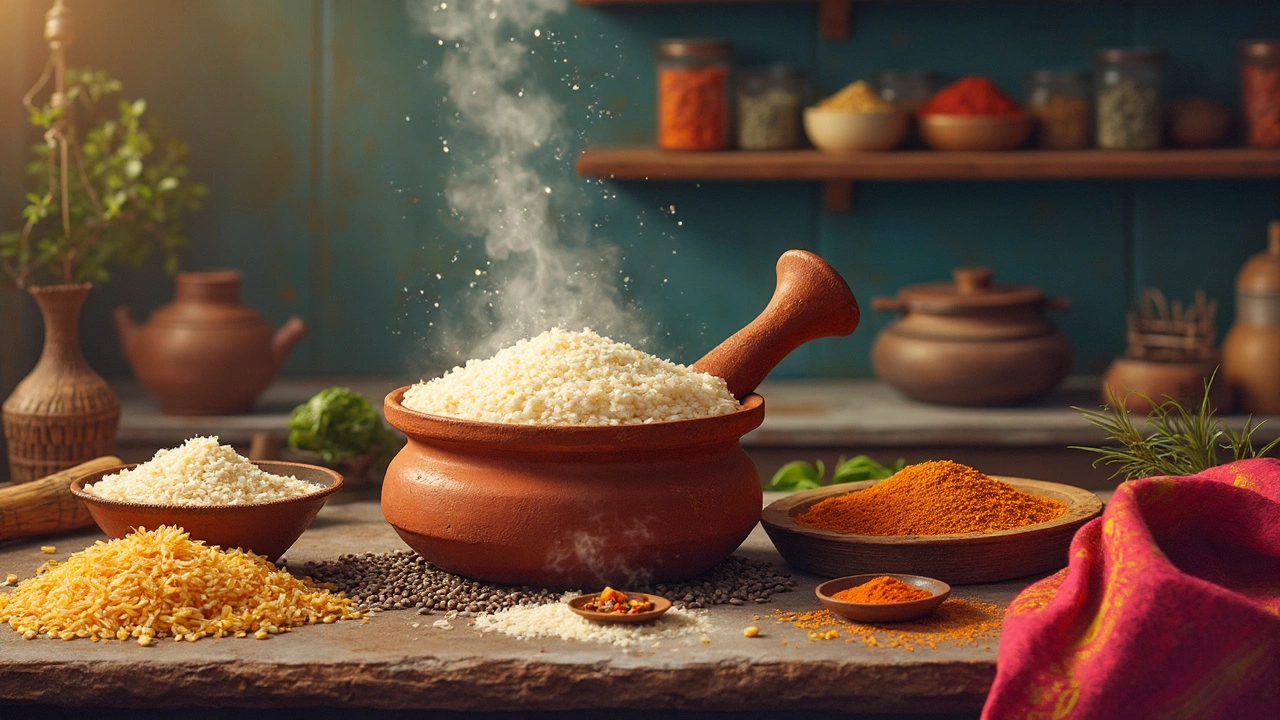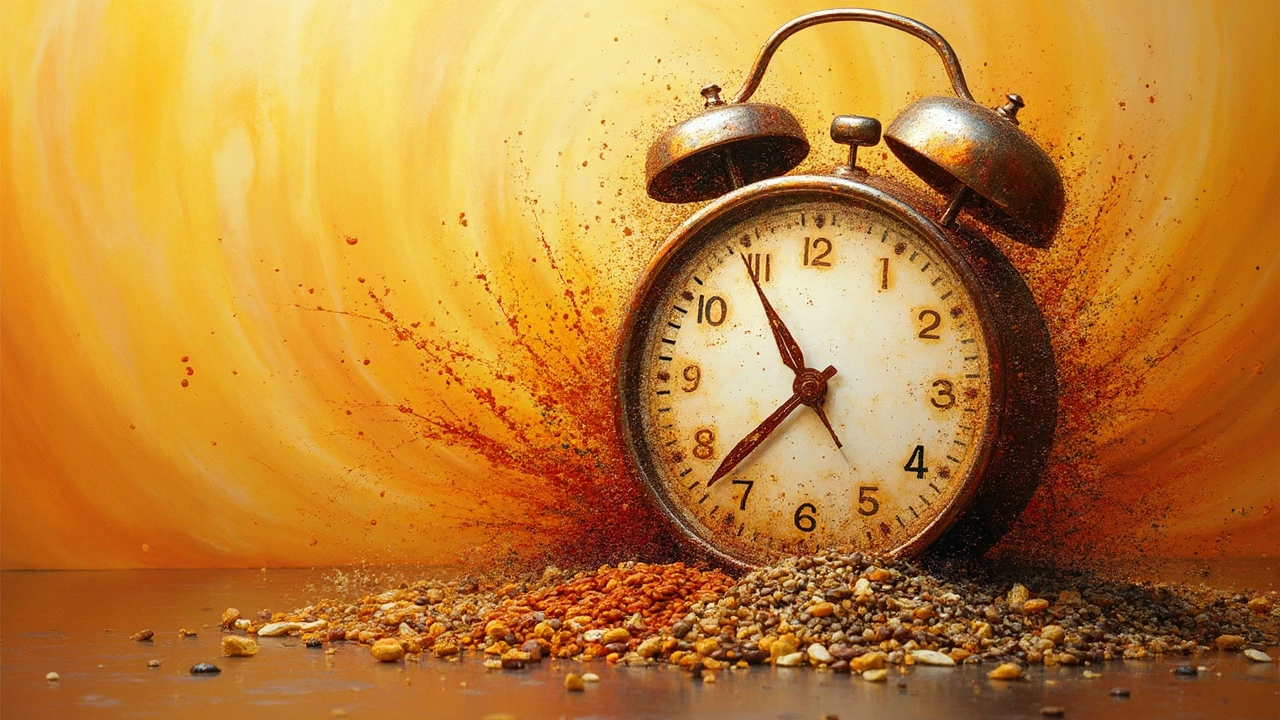Fastest Way to Ferment Dosa Batter Without Yeast
 Feb, 14 2025
Feb, 14 2025
Wondering how you can quickly ferment dosa batter without the aid of yeast? You're not alone! While yeast is often a go-to ingredient for quick fermentation, there's another way that sticks closer to traditional methods. Temperature, ingredient quality, and even the kind of water you're using can significantly speed up this process.
Using aged rice, for instance, can make a world of difference. This isn't some hidden culinary secret but an accessible trick that adds a distinct boost to your fermentation efforts. A warm spot in your kitchen can also be your batter's best friend. Think about leaving the batter near a sunny window or next to a heated appliance—just make sure it's not too hot!
- Understanding Dosa Batter Fermentation
- Ingredients That Boost Fermentation
- Spotlighting Temperature and Environment
- Storage Hacks for Quick Fermentation
- Common Mistakes to Avoid
Understanding Dosa Batter Fermentation
For the uninitiated, fermenting dosa batter is like conducting a scientific experiment in your kitchen. But fear not—it's simpler than it sounds! Fermentation is all about those good bacteria and yeast naturally present in the ingredients or environment that help the batter rise and become airy, leading to that signature crispiness in dosas.
What Happens During Fermentation?
During fermentation, the carbohydrates in rice and urad dal are broken down by these natural microorganisms. They produce carbon dioxide, which lightens the batter, and lactic acid, which adds that slight tanginess. This process is heat-dependent, which is why a warm spot can make all the difference.
Ingredients and Their Role
The type of rice matters a lot. Using parboiled rice or aged rice has been shown to accelerate fermentation. Why? Because they offer an optimal environment for those microorganisms to thrive. Plus, urad dal naturally contains proteins that enhance the fermentation process. The key here is simplicity—a careful balance of rice and dal does wonders.
Temperature and Time
Temperature plays a massive role. Anything between 25-30°C (77-86°F) is ideal. If your kitchen has been cooler, consider using an oven with the light on or placing the batter in an insulated cooler. Fermentation times vary based on these conditions, with typical durations ranging from 8 to 12 hours.
Adding a pinch of sugar might sound weird, but it gives the naturally occurring yeast in your batter a quick snack, accelerating the whole process. By understanding these aspects, achieving that perfect dosa becomes a walk in the park.
Ingredients That Boost Fermentation
Looking to speed up your dosa batter's fermentation process without relying on yeast? The secret lies in the ingredients! The right ones can give your batter the head start it needs to reach that perfect level of tanginess and fluffiness.
Pick the Right Rice and Dal
Choosing aged rice is a game-changer. Older rice tends to absorb water more effectively than fresh rice, which can help in achieving the desired consistency faster. Pair this with split urad dal. The combination of these grains naturally facilitates fermentation, offering the perfect balance for your fermentation goals.
Water Quality Matters
Believe it or not, the mineral content in water can affect your batter. Opt for filtered or mineral water rather than just plain tap water. Minerals assist in the fermentation process, giving the bacteria what they need to work their magic.
Add a Little Fenugreek
A pinch of fenugreek seeds can act as a catalyst. They're rich in nicotinic acid and enzymes that encourage the growth of the lactobacillus bacteria, promoting faster and more effective fermentation.
Rice to Dal Ratio
Keep a close eye on your rice-to-dal ratio. A 3:1 ratio of rice to urad dal usually does the trick. This proportion provides a balanced mix of carbohydrates and proteins, which are essential for a thriving fermentation process.
Bonus Ingredient: Flattened Rice (Poha)
Adding a small handful of flattened rice, commonly known as Poha, can increase the softness of the dosa. Soak it along with other ingredients before grinding. This not only enhances the batter's texture but also helps speed up fermentation.
If you fine-tune these ingredient choices, you'll find your dosa batter reaching nirvana a lot quicker. Why wait longer than you have to for a plate of fluffy and crispy dosas?

Spotlighting Temperature and Environment
When it comes to fermenting dosa batter, environment can be a game-changer. Believe it or not, the temperature around your fermenting batter can turn a boring mixture into a fluffy delight. Let's dig into why.
Why Temperature Matters
The yeast and bacteria love a warm and cozy spot. A higher temperature speeds up the natural fermentation process without any yeast. Aim for a sweet spot of around 30°C to 35°C (86°F to 95°F). Yup, it's that warm!
If you live in a colder climate, fear not. There are a few tricks up your sleeve:
- Use an Oven: Pop the batter into the oven with just the light on. No additional heat needed; that light bulb does wonders.
- Insulated Containers: Fermenting in an insulated container retains heat better. Everyone loves a thermal blanket, even your batter.
- Warm Water Solution: Place the container in a larger pot filled with warm water, changing it occasionally to maintain the temperature.
The Right Environment
Your environment affects more than just the temperature. Humidity, air circulation, and even the kind of container used all play a role. An airtight container is a no-go. You’re fermenting, not making a preserve!
Ensure airflow around your batter. A light cloth or loose cover can let the batter breathe while keeping dust out. Keep it natural, keep it simple.
Stats on Fermentation
Here's a quick snapshot of temperature effects on fermentation:
| Temperature | Time to Ferment |
|---|---|
| Below 20°C / 68°F | 24-48 hours |
| 20°C to 25°C / 68°F to 77°F | 12-24 hours |
| 30°C to 35°C / 86°F to 95°F | 6-12 hours |
See how a small tweak in temperature can make a massive impact? By understanding and controlling these factors, you give your dosa batter the optimal conditions to ferment quickly and efficiently. So get creative with your environment and watch your batter transform!
Storage Hacks for Quick Fermentation
If you're aiming to speed up dosa batter fermentation, how you store it makes a big difference. Getting it right can save you hours and give you perfectly bubbly batter. Let's see how you can master this.
Choose the Right Container
Using the right container is clutch. Opt for a stainless steel or glass bowl rather than plastic. These materials retain heat better, helping your batter get to optimal fermentation temperature faster. Leave some space at the top of the container to allow for expansion as it ferments.
Location, Location, Location
Where you keep your batter is just as crucial. Place it in a warm, cozy spot to nurture those natural fermenters. If you're in a chilly area, consider placing your container in the oven with just the light on. The warmth from the bulb can create the perfect setting.
"Using warm spaces effectively is a game changer. Be it next to a window or a kitchen appliance, warmth expedites fermentation like nothing else," says Chef Kiran Rao, a fermentation enthusiast.
Seal for Success
You might think airtight is the way to go, but dosa batter needs some air to breathe. Use a breathable cover like a mesh screen or a thin cloth rather than a tight lid. This lets air circulate without letting any contaminants in.
Quick Hacks to Try
- As a precaution, line the base of your container with a thin layer of warm water. It'll help regulate the temperature and speed things up.
- Consider using a small bowl of water inside a microwave to enhance ambient warmth; just ensure that you're cautious and monitor the batter regularly.
These storage hacks can make all the difference. With a few adjustments, you'll have a fermentation process that's swift and effective, leaving you more time to enjoy those delicious dosas.

Common Mistakes to Avoid
Cooking, like any art, has its learning curve, and fermenting dosa batter is no different. Here are some common stumbles that folks often run into and how to sidestep them.
Ignoring the Climate
One of the biggest mistakes is not accounting for the ambient temperature. If you live in a cooler climate, your batter might not ferment as quickly as you'd like. To fix this, try using a preheated oven that's just slightly warm (not hot) to create an optimal fermentation environment.
Choice of Ingredients
Using fresh rice instead of aged rice can slow down fermentation. Older rice tends to be drier and ferments better. Similarly, your choice of dal impacts fermentation. Regular checks on the quality of your urad dal can make or break the batter.
Water Woes
The water you use can be a stealthy culprit. Highly chlorinated water can sometimes impede the fermentation process. Using filtered or boiled and cooled water ensures better results.
Ignoring the Clock
Timing is crucial. Some folks get impatient and don't wait long enough for the batter to ferment fully. You might need to leave it overnight or even up to 24 hours, depending on the conditions.
Storage Blunders
Storing batter in an airtight container might seem smart to prevent contamination, but it can actually hinder yeast-free fermentation. Opt for a slightly covered container to allow some airflow.
Steering clear of these common mistakes can turn your fermentation game around, making your dosa batter light, fluffy, and perfect for cooking!